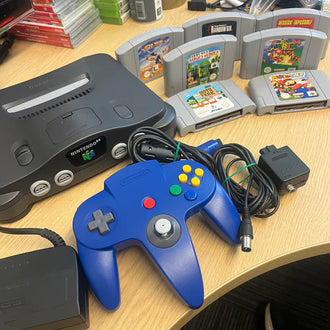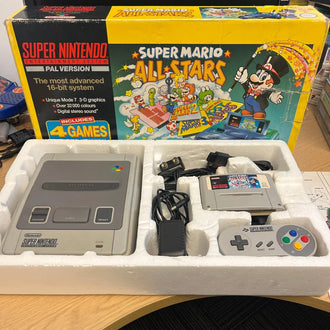How To Build The Ultimate Pokemon Trading Card Deck - A Beginner's Guide
Many aspiring Pokemon Trading Card Game players dream of creating the ultimate deck that will lead them to victory in battles. Building a powerful deck requires careful consideration of card choices, synergy between cards, and strategic gameplay. In this beginner's guide, we will walk you through the crucial steps to constructing a winning Pokemon TCG deck that will help you rise above the competition. From selecting the right Pokemon and Trainer cards to crafting a well-balanced strategy, we will cover everything you need to know to dominate your opponents on the battlefield. Get ready to level up your game with our expert tips and tricks!
Key Takeaways:
- Understand Card Types: It is crucial to understand the different types of cards such as Trainer, Energy, and Pokemon cards to build a well-rounded deck.
- Focus on Synergy: Building a powerful deck involves choosing cards that work well together and complement each other's strengths and weaknesses.
- Balance Your Deck: Ensuring a good balance of Pokemon, Trainer, and Energy cards in your deck is crucial for consistency and strategic play.
- Keep Up with Game Rules: Stay updated on the latest game rules, card rotations, and banned cards to build a competitive and legal deck.
- Practice and Adjust: Constantly playtest your deck, make adjustments based on your performance, and learn from your losses to improve your deck-building skills.
Getting Started: Building Your Foundation
Little did you know that building the ultimate Pokémon Trading Card deck starts with a strong foundation. This crucial step will set you up for success in battles and tournaments, so it's crucial to get it right from the beginning.
Essential Tips for New Players
Building a solid deck requires a good balance of Pokémon cards, Trainer cards, and Energy cards. Make sure to have a variety of Pokémon types in your deck to cover weaknesses and strengths. Keep your deck focused by including only the cards that support your overall strategy.
- Start with a theme or strategy in mind for your deck.
- Test your deck by playing against different opponents.
- Research popular deck builds and strategies online.
Perceiving your deck's strengths and weaknesses will help you refine and improve it over time, leading to a more competitive and powerful deck.
Understanding Card Types and Game Mechanics
Building the ultimate Pokémon Trading Card deck requires a deep understanding of the different card types and game mechanics. Each card type - Pokémon, Trainer, and Energy - plays a crucial role in how your deck functions during battles. Knowing how to use these types effectively will give you a significant advantage over your opponents.
- Understanding the importance of Energy cards in powering up your Pokémon.
- Strategically using Trainer cards to support your Pokémon during battles.
- Mastering the abilities and attacks of your Pokémon cards for maximum impact.
Any successful deck builder knows that a deep understanding of card types and game mechanics is the key to creating a winning deck. By mastering these fundamentals, you can elevate your gameplay and outsmart your opponents with strategic moves and clever tactics.
| Pokémon | Trainer |
| Types: Grass, Fire, Water, etc. | Types: Item, Supporter, Stadium, etc. |
| Abilities: Attacks, Retreat Costs | Functions: Draw cards, Heal Pokémon, etc. |
| Energy Requirements | Support Strategies |
| Weaknesses and Resistances | Strategic Plays |
Deck Building Strategies
Some of the most crucial decisions when building a Pokemon Trading Card Game deck involve selecting the right cards to include. Deck building is not just about randomly putting cards together; it requires strategic thinking and planning to create a well-balanced and powerful deck. In this chapter, we will explore some key strategies to help you build the ultimate Pokemon Trading Card deck.
Choosing a Focal Pokemon and Theme
An necessary first step in building your deck is selecting a focal Pokemon around which you will build your strategy. This Pokemon will be the centerpiece of your deck and should align with the theme you want to create. Whether you choose a powerful Legendary Pokemon, a fast and agile basic Pokemon, or a strategic evolution line, make sure it complements the overall theme you have in mind for your deck. Building around a focal Pokemon helps ensure synergy and coherence in your deck, enabling you to execute your strategy effectively.
Balancing Your Attackers and Support Cards
Balancing your deck with a mix of attackers and support cards is crucial for success in battles. Attackers are your Pokemon that deal damage and knock out your opponent's Pokemon, while support cards provide utility, draw power, and aid in setting up combos. Balancing your deck with the right mix of attackers and support cards is key to maintaining pressure on your opponent, being able to recover from setbacks, and adapting to different strategies your opponent may employ. Having a good balance between attackers and support cards ensures that you have options in every situation and increases your chances of securing victory in battles.
Pokemon with complementary abilities and attacks can work together to create powerful combinations that can turn the tide of a battle in your favor. By strategically selecting and pairing attackers with support cards that enhance their strengths and cover their weaknesses, you can maximize your deck's potential and create a formidable force on the battlefield. Recall, a well-balanced deck is not just about having strong attackers but also about having the right support cards to back them up and sustain your strategy throughout the game.
Advanced Tips for Deck Optimization
Not all Pokemon Trading Card decks are created equal. To truly master the game and rise above the competition, you must optimize your deck to its fullest potential. Here are some advanced tips to help you build the ultimate Pokemon Trading Card deck:
-
Factors That Affect Card Synergy
Card Type Ability Basic Pokemon Pokemon with complementary abilities Evolution Pokemon Cards that support evolution lines - Type Advantage: Matching Pokemon types for synergy.
- Abilities: Combining Pokemon with abilities that enhance each other.
-
Adjusting Your Deck to the Current Meta
Meta Trends Counter Strategies Popular decks Include cards to counter popular strategies Weaknesses in the meta Adjust your deck to exploit these weaknesses - Meta Trends: Stay updated on popular deck archetypes and strategies.
- Counter Strategies: Include cards in your deck to counter prevailing meta strategies.
Adjusting Your Deck to the Current Meta
Advanced players always keep an eye on the evolving meta of the game. They study popular decks and strategies, identify weaknesses in the meta, and adjust their decks accordingly to gain a strategic advantage over opponents. By constantly analyzing and adapting to the current meta, skilled players can stay competitive and improve their win rates in tournaments.
Advanced deck optimization requires a deep understanding of the game mechanics, card interactions, and meta trends. By mastering these aspects and fine-tuning your deck to the current meta, you can create a powerful and versatile deck that can stand up to any challenge. Stay informed, stay adaptable, and stay ahead of the competition to become a Pokemon Trading Card Game champion.
Playtesting and Refining Your Deck
Your journey towards building the ultimate Pokémon Trading Card deck doesn't end with assembling the perfect combination of cards. Playtesting and refining your deck is a crucial step in ensuring that your deck can stand up to any opponent in a real battle. By putting your deck to the test through playtesting, you can identify its strengths and weaknesses, allowing you to make necessary adjustments for optimal performance.
How to Effectively Playtest
Any aspiring Pokémon TCG player knows the importance of playtesting to improve their deck. Choose a variety of opponents to play against to simulate different strategies and challenges. Take note of which cards are performing well and which ones are often dead draws. Observe how your deck flows during a game and make mental notes of the key moments that decide the outcome.
To gauge the consistency and reliability of your deck, play a series of games against different opponents and in various scenarios. Keep track of your win rate and identify patterns that indicate areas for improvement. Don't be discouraged by losses; instead, use them as learning opportunities to refine your deck further.
Making Necessary Adjustments
To effectively refine your deck, you need to be ready to make necessary adjustments based on your playtesting results. This may involve swapping out certain cards that underperform or adding new cards to address weaknesses in your strategy. Keep your deck flexible and adaptable to different matchups by constantly evaluating its performance and making tweaks accordingly.
Effectively making necessary adjustments to your deck requires a keen understanding of its strengths and weaknesses. Be strategic in your choices and consider the overall synergy of your deck when making changes. Recall, the goal is to create a well-rounded and competitive deck that can hold its own in any battle.
Summing up
Taking this into account, building the ultimate Pokémon trading card deck requires careful consideration of card types, synergy, strategy, and balance. By following the steps outlined in this beginner's guide, aspiring trainers can create a deck that is not only competitive but also reflective of their personal playing style. Remember to continuously refine and adapt your deck as you gain more experience and encounter different opponents. With dedication and practice, you can become a formidable Pokémon trading card game player. Good luck on your journey to mastering the art of deck building!
FAQ
Q: What factors should I consider when building the ultimate Pokemon Trading Card deck?
A: When building the ultimate Pokemon Trading Card deck, consider the following factors: card synergy, balance of Pokemon types, energy distribution, trainer cards for support, and strategic gameplay.
Q: How many Pokemon should I include in my deck?
A: It is recommended to include around 20-25 Pokemon in your deck, with a mix of basic Pokemon, Stage 1, and Stage 2 evolutions to ensure versatility and adaptability during gameplay.
Q: What are some imperative trainer cards to include in a Pokemon Trading Card deck?
A: Essential trainer cards to include in your Pokemon Trading Card deck are items like Professor's Research for card draw, Quick Ball for Pokemon search, Boss's Orders for strategy, and Rare Candy for evolution acceleration. These cards provide crucial support and help enhance your deck's performance.



